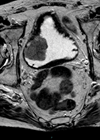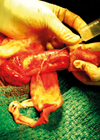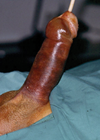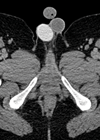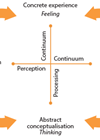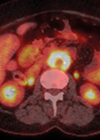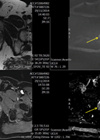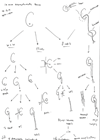Features
Getting it Right First Time in urology: the implementation phase
The Getting it Right First Time (GIRFT) programme is the largest and most comprehensive initiative to improve the quality and efficiency of individual clinical services that the NHS has ever instigated. The programme falls under the auspices of NHS Improvement...
Bladder carcinoma MRI
Bladder malignancy is one of the commonest malignancies of the renal tract, accounting for approximately 6% of male malignancy and 2% of female malignancy. The incidence increases with patient age with 70% of patients being over the age of 65...
Training to be a urologist: how risky is it?
The NHS and urology face challenging times in trying to provide quality patient care efficiently and economically. Urology trainees are experiencing conflicting pressures with a new contract, a challenging on-call system and changing training requirements in an overstretched, centralised service...
Penile fracture
Traumatic rupture of the tunica albuginea with either one or both corpora cavernosa of the penis is known as penile fracture. This may be associated with corpus spongiosum or urethral injury. Incidence Penile fracture was reported for the first time...
Understanding Stauffer’s syndrome
Who was Stauffer and what is Stauffer’s syndrome? Maurice Stauffer (1915-1994) was a gastroenterologist at the Mayo Clinic in Rochester, United States, and in 1961 first characterised the non-metastatic, paraneoplastic effects of renal cell carcinoma (RCC) on liver size and...
Stuttering (recurrent ischaemic) priapism
Stuttering (recurrent ischaemic) priapism (SP) is a rare urological condition. Affected men will often experience almost daily prolonged and painful sleep related erections (SRE). Interestingly, these men report normal erections during the day and whilst awake. These episodes are usually...
Testicular tumour imaging
Testicular tumours are the most common tumour in young males with a peak incidence seen between 25 and 34 years [1]. The overall incidence is slowly increasing, although the exact reasons for this are uncertain, and there is a greater...
Simulation-based training of procedural skills: application and integration of educational theories
Educational theories: how familiar are we with these theories and their application in our training? As a Simulation Fellow I have been involved in teaching specific procedural skills and running full immersion simulation sessions. This experience has exposed me to...
Retroperitoneal fibrosis
Introduction Retroperitoneal fibrosis (RPF) is a condition that occurs when extensive fibrosis develops in the retroperitoneum, usually centred over the anterior aspect of the fourth and fifth lumbar vertebrae. The fibrotic tissue typically surrounds the infrarenal aorta, inferior vena cava...
The scent of Ethiopia: a personal story part 2
In May/June 2016 we featured a wonderful account of Zeeshan Aslam’s first trip with Urolink to the Hawassa Referral Hospital in Ethiopia (see here). One year on we are delighted that Zeeshan has once again taken the time to provide...
The PROMIS trial – time for multi-parametric MRI before a first prostate biopsy
Whilst the relatively random process of 12 core transrectal ultrasound guided (TRUS) prostate biopsy remains by far the most widely employed approach to prostate cancer diagnosis in the UK, its flaws as a standalone diagnostic strategy are increasingly apparent. TRUS-biopsy...
Consent: your obligations in the modern, post-Montgomery era
There has been so much recent discussion and so much emphasis placed on the fundamental right that we all have to determine what is or is not done to us, the right to self-determination, that it would be either a...


